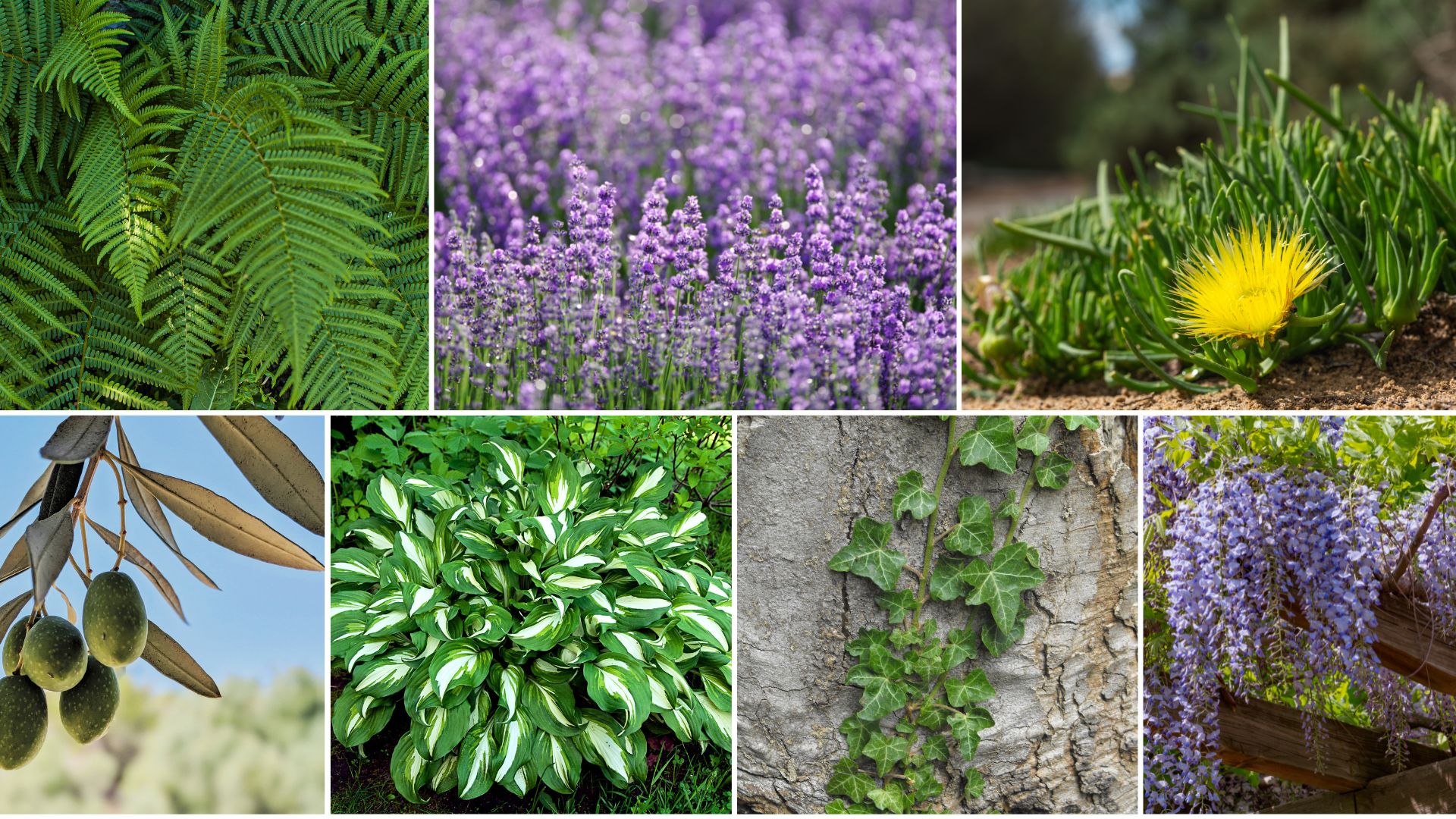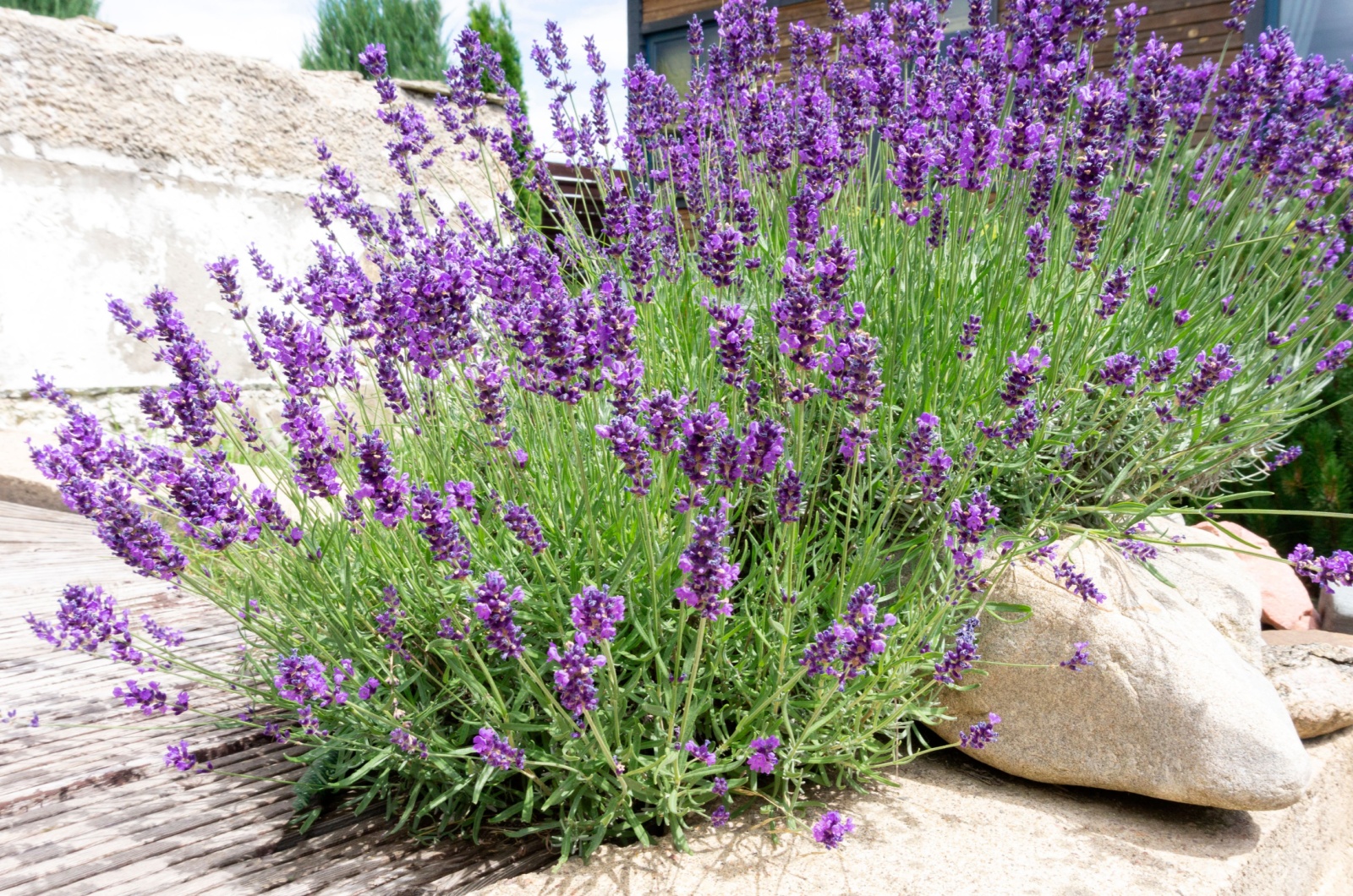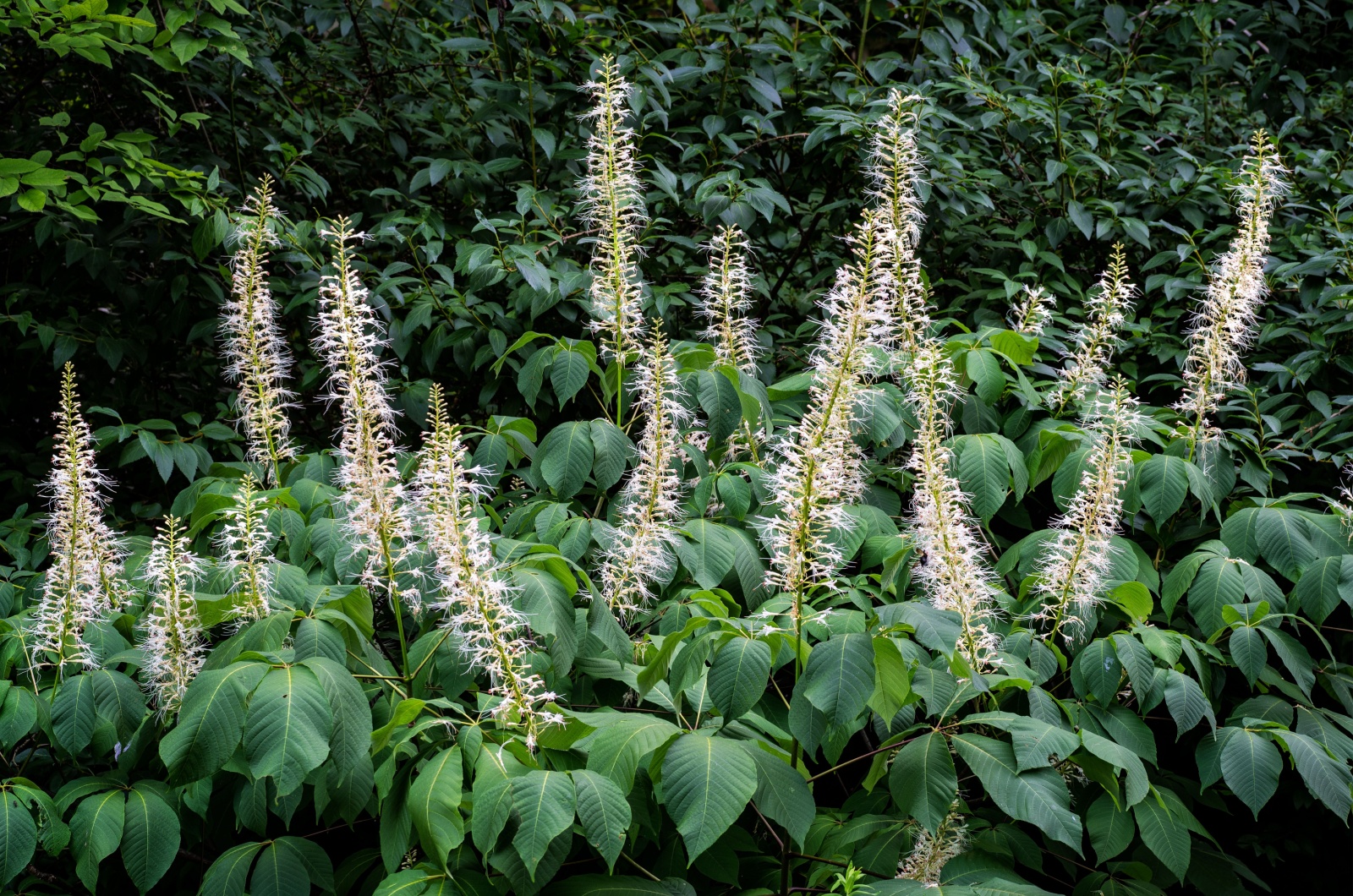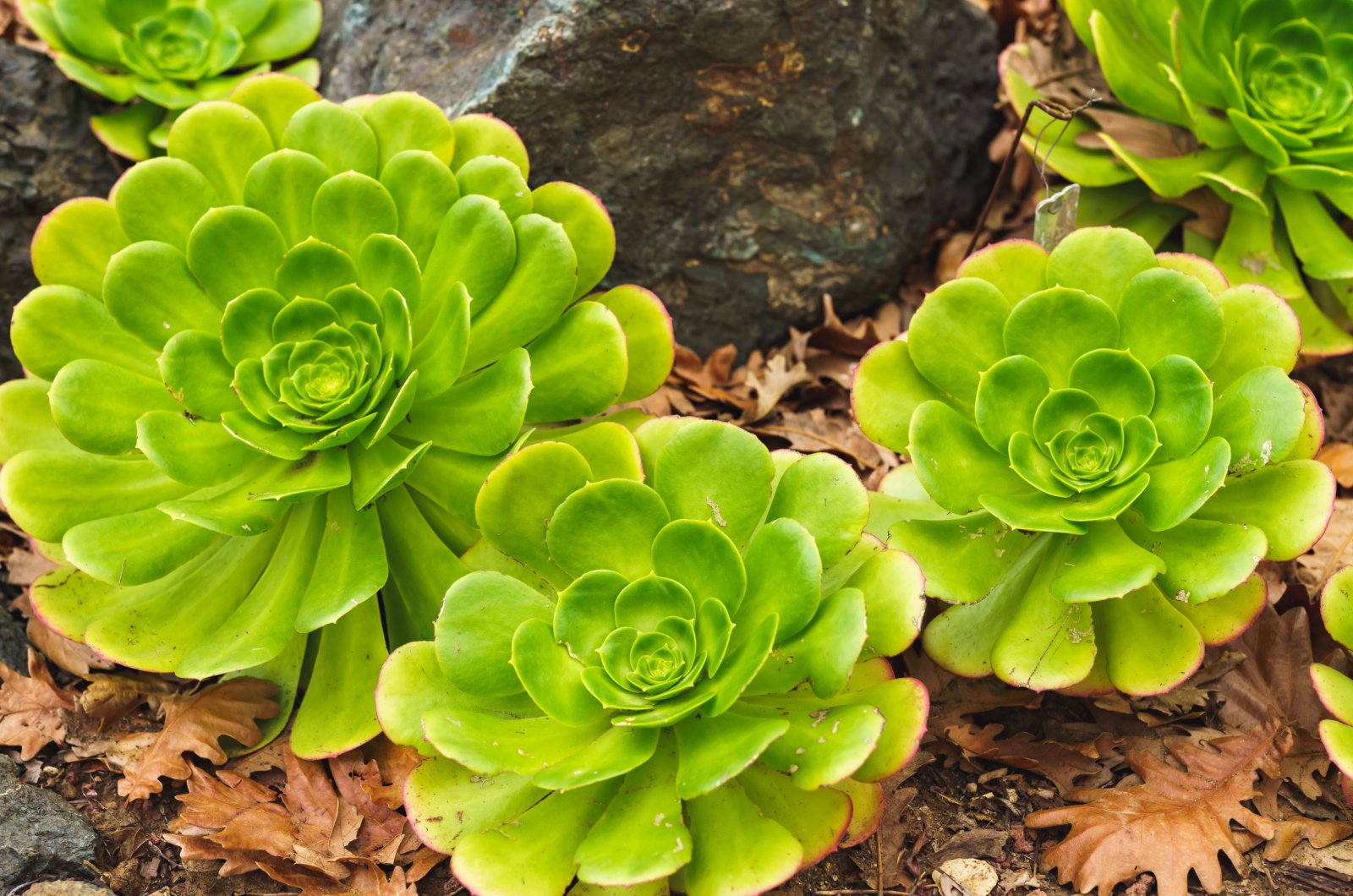Many of us ‘exclude’ the front door when decorating and designing our home’s interior. It really shouldn’t be that way, I mean, that’s the most exposed part of our home and the first thing neighbors or guests notice.
Instead of buying expensive decoration items, you can go with a simpler yet even more beautiful solution: adding plants.
I’ll show you my favorite welcoming front door plants and their features to help you decide. From some foliage and flowering plants to low-growing or climbing species, I’m sure you’ll find the perfect one!
Let’s get started!
1. Ferns And Hostas
If you want to add a tropical vibe to your front door area, ferns will do the best job. These amazing species come in different shapes and sizes, so there shouldn’t be a problem finding one for yourself.
Evergreen ferns are also perfect for porch owners since they thrive in shady conditions. Another benefit of these plants is that they are easy to maintain, so if you’re a novice, they may be just what you were looking for.
My top pick when it comes to ferns is the foxtail fern with its spectacular deep green foliage. This species belongs to the Asparagus family, which means it’s not a true fern but we classify it as such due to its growth habit, care requirements, and appearance.
If you want to spice things up, you can combine ferns with hosta plants. These are also shade-loving plants and their massive foliage perfectly complements those of ferns.
You don’t even need to plant these species into separate pots; a large pot with drainage holes will work just fine.
2. Lavender
Flowering plants always make a great addition to outdoor spaces. Growing lavender next to your front door will definitely make your home more welcoming.
Its purple blossoms will add a rustic touch and everyone will be enchanted by its amazing fragrance. If you have enough space to plant your lavender in the ground, you’ll achieve a wilder look.
These plants also perform well in containers and if you prefer a neater look, this should be your choice. You can prune them and keep them under control easily.
Lavender loves sun, which is why it isn’t a good option for porch owners. This plant prefers drier conditions so be careful not to overwater it. That’s actually the easiest way to kill lavender.
Best of all, you can harvest your lavender and keep its fragrant blossoms indoors! It’s a win-win situation!
3. Olive Tree
Growing trees in pots may be challenging but if you choose an olive tree, things are way easier. Bay trees and boxwood require regular pruning but you don’t need to think about it if you decide on olive trees; their gnarly trunks look perfect just the way they are.
If you want to achieve a more formal look, add two olive trees to each side of your front door and prune them to their popular lollipop shape.
Even though many growers claim that these trees thrive in dry and warm conditions, from my experience they tolerate cooler temperatures down to 15 degrees Fahrenheit.
If you live in cooler climates, you can take your olive trees indoors to overwinter. They’ll make an excellent addition to your indoor design.
For larger olive trees, cover them with a piece of horticultural fleece to protect them from low temperatures.
4. Evergreen Shrubs
If you would like your front door space to look formal and symmetrical, go with evergreen shrubs. Add two shrubs to each side of your door for the best results.
The great thing about these plants is that they’re hardy and fairly easy to maintain. They perform well in containers and prefer partial shade, making them perfect for porch owners.
American filbert and Bottlebrush buckeye are one of the prettiest evergreen shrubs that thrive in shady locations.
They’ll stay green all year long, so you don’t have to worry about the appearance of your doorway throughout the seasons.
The best strategy is to plant a single species per large container. If you’re an experienced grower and you like pruning your plants, go with boxwood.
If you want to add a splash of color, plant pansies or similar flowering plants around the base of your shrubs.
5. English Ivy
Plants with a climbing growth habit may enhance different areas of your outdoor space. You can choose some climbers for your fence, trellis, and even your porch and walls around your front door area.
English ivy is definitely one of the best plants for that job. Its spectacular lobed green foliage and woody stems will make every part of your yard prettier.
But, there’s one thing you should know about English ivy and you may not like it. This is an invasive species (1) with a fast growth habit and it could take over your yard quickly if you don’t control it.
That is the main reason why I don’t recommend this plant to all growers; you should be skilled in pruning and controlling plant growth unless you want it to spread all over your place and possibly to the yard of your neighbors.
6. Hardy Succulents
If you’re looking for almost indestructible plants, succulents are perfect for you. These plants thrive even on a bit of neglect and they do well if grown in containers.
You can choose from among a wide range of varieties but my favorites are Aeoniums and Echeverias. The shape and colors of these plants will ensure a wonderful porch display.
You can plant both species in a large container and they’ll thrive as long as they have enough bright light.
Flowering succulents will also make an excellent addition to your front door area, just make sure to choose the species that can withstand conditions in your region.
Alternatively, take your succulents indoors once the fall approaches to prevent frost damage.
7. Wisteria
The vibrant clusters of blossoms and cascading vines of captivating wisteria plants make it a favorite of many growers.
It’s easy to maintain and once it’s fully established the only thing you need to do is water and feed it from time to time.
This is a highly adaptable plant species and thrives in almost all regions. But, don’t let its delicate look fool you; some wisteria species, such as sinensis aka Chinese wisteria, are highly invasive and may take over your yard. (2)
It’s always better to go with native species, which are, in this case, American and Kentucky wisterias. Simply ensure some sort of climbing support, such as a wall, and enjoy the view.
If you want that first impression of your home to go well, these plants will do the job. Nothing looks more inviting than a healthy and thriving plant so make sure to follow our maintenance tips for each plant.
References:
1. English Ivy (Hedera helix). (n.d.). https://www.invasive.org/alien/pubs/midatlantic/hehe.htm
2. Chinese Wisteria (Wisteria sinensis). (n.d.). https://www.invasive.org/alien/pubs/midatlantic/wisi.htm








